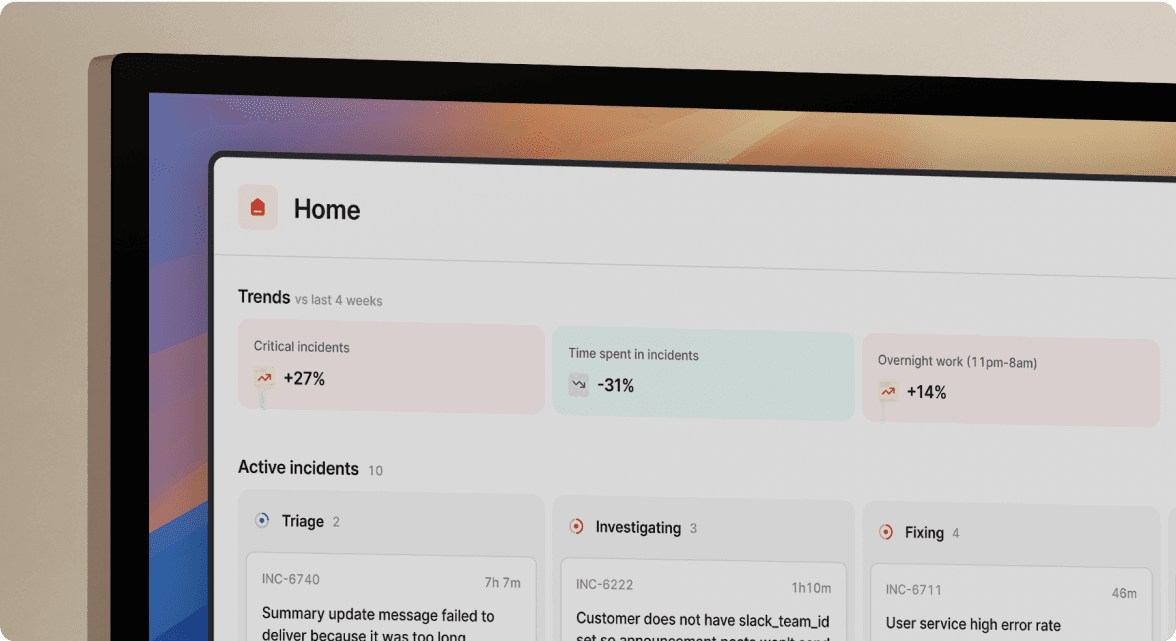Prioritizing your incident classification process for faster response times

In DevOps, the reputation of your business relies heavily on effective incident response. Proper incident classification is key to ensuring your response is timely and efficient.
But because the process of responding to incidents involves many steps and (depending on the issue) a wide variety of people, it can be difficult to know how to proceed without first identifying what type of incident has occurred. Thankfully, that's where incident classification comes in handy.
Here, we've broken down how to classify incidents, and why it's so important to do so in the first place.
What is incident classification and why is it essential?
In the world of DevOps, incident classification is the process of categorizing incidents based on specific criteria.
Doing this is incredibly important. Not only will classifying incidents correctly help you determine how you respond, but it'll ultimately help you save time responding to incidents and give you the structure to operate more efficiently.
Why incident classification is crucial for effective incident response
Simply put, without incident classification, responding to incidents the right way would be really tough. In a situation where every incident carries the same weight, a lot of things can go astray very quickly. Here's why it's worth your time to think about this process and avoid this:
- Prioritization: Different incidents have varying levels of impact on users and systems. Classification allows teams to prioritize their efforts, focusing on high-impact issues first.
- Resources: There are only so many people around to tackle incidents that come up. Classifying incidents helps teams allocate the right resources to the right problems instead of chasing everything with the same level of urgency.
- Communication: A standardized classification process helps drive clearer communication among responders. When everyone has a shared understanding, collaboration becomes more efficient.
Common methods for classifying incidents in DevOps
Incidents are classified using various criteria based on the nature and severity of the issue. Here are some common types you'll come across:
Understanding incident types
This one is pretty straightforward. Incident type refers to the specific type of incident that has occurred, for example, production, security, or data.
Identifying what the incident type is right out of the gate will allow the rest of your response processes to fall into place. Looking ahead, it'll also highlight whether certain parts of your organization are more prone to specific types of incidents than others.
How to determine incident severity levels
Incident severity refers to the level of impact the incident has caused. As always, what this looks like can vary quite a bit from org to org. In general, you'll see teams use low, medium, and high severity to classify their incidents. Alternatively, you'll also see minor, major, and critical, which is what we use at incident.io.
To determine the severity of an incident, you should analyze its scope and the overall impact on your company. For example, a routine bug that has very little impact on customers can be classified as minor, but a checkout page being down for a few minutes is something you can reasonably classify as critical.
Defining incident categories
The incident category refers to the area that has been affected by the incident. For example, networks, systems, or applications.
Assessing the expected impact of an incident
At some organizations, you might also see "expected impact" as a classification type. The expected impact outlines the potential consequences of the incident.
For example, this might include financial loss, reputational damage, legal implications, and possible loss of intellectual property. Understanding the expected impact will allow you to take the appropriate actions to minimize the damage caused by the incident and determine which stakeholders you should consult first.
Linking incident response strategies to classification types
Once you have defined the classification levels for each type of incident, you need to determine which classifications require which responses.
For example, a response plan for a low-severity incident may include steps such as documenting the incident, notifying the appropriate team members, and adding it to a backlog. On the other hand, a response plan for a high-severity incident may involve responding to the incident immediately, following specific communication plans, like updating a status page and coordinating efforts with external stakeholders.
It’s important to regularly review and update these response plans to ensure they remain relevant and effective. In addition, you should conduct drills and exercises, like Game Days, to test the methods, analyze incident data to identify areas for improvement, and gather feedback from stakeholders.
Conclusion
Effective incident classification helps prioritize issues, allocate resources, and streamline communication, ensuring that your DevOps team responds efficiently and minimizes impact. Regularly review and test your response plans for continuous improvement.

See related articles
So good, you’ll break things on purpose
Ready for modern incident management? Book a call with one of our experts today.

We’d love to talk to you about
- All-in-one incident management
- Our unmatched speed of deployment
- Why we’re loved by users and easily adopted
- How we work for the whole organization



